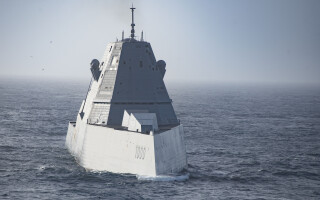Pocket-sized UASs get tryout from National Guard personnel
NewsJuly 29, 2024

FORT DRUM, N.Y. Soldiers from the New York National Guard’s 27th Infantry Brigade Combat Team tested very small uncrewed aerial systems (UASs) and laser rangefinder systems during late June 2024, in a program aimed at familiarizing users with small new technologies designed to mitigate the risk to soldiers on the battlefield.
The National Guard team tested the 1.16-ounce (33-gram) Black Hornet 3 nano drone, a UAS made by Teledyne FLIR that is small enough to fit in one hand, has a flight endurance time of about 25 minutes, and needs no equipment other than what soldiers can carry on their combat gear.
While similar systems are already in use with some active-duty units including the 82nd Airborne, the New York troops are the first Guard unit to train with the Black Hornet 3 UAS. According to the Army's report of the tests, the tiny UASs can quickly transmit live video and HD still images to operators to enhance battlefield awareness and decision-making.
Another system the National Guard teams fielded and trained on was the lightweight laser designator rangefinder (LLDR), a personnel-portable long-range target locator and laser designation system, which is made to provide those on the battlefield with highly accurate target location information while using the laser designator to call for fire using precision, near-precision, and area munitions. The Army press release notes that the LLDR relies on advanced sensor technologies -- such as thermal imaging, cameras, laser designator spot imaging, digital magnetic compass, GPS, and more -- to measure everything from distance to target to the rotation of the earth and therefore come up with more precise targeting data.
“The LLDR allows you to basically have another person see what you’re doing or what you’re looking at without the (soldier) having to move,” said Spc. Jeffrey Anicet, a joint fire support specialist with 1st Battalion, 258th Field Artillery Regiment. “For us, for the observers, it makes it easier for us to target rounds, especially with mortars. Then, when working with aircraft on guided ordnance, we’re able to precision drop along those coordinates exactly where we want them to the tenth of a meter.”







